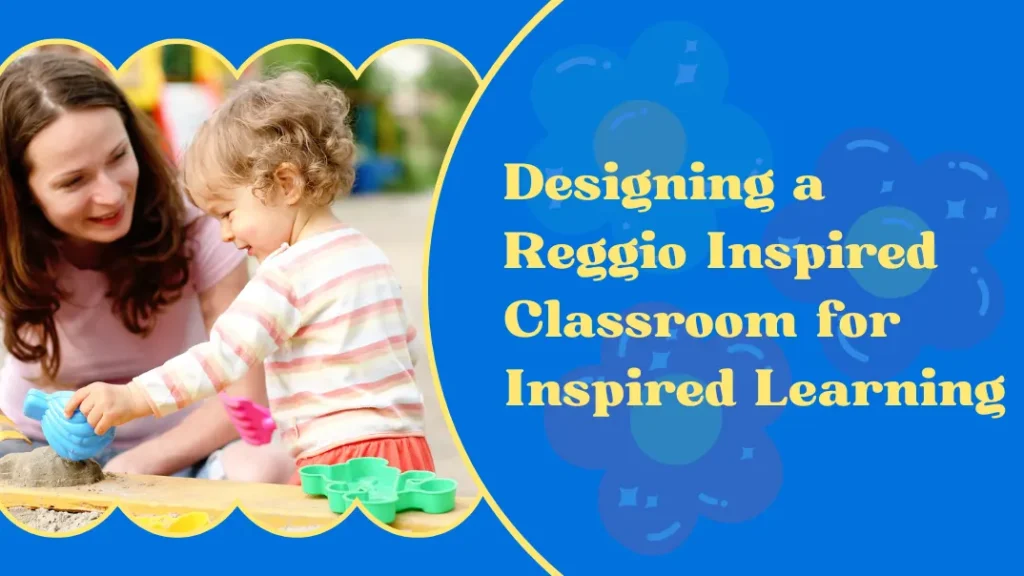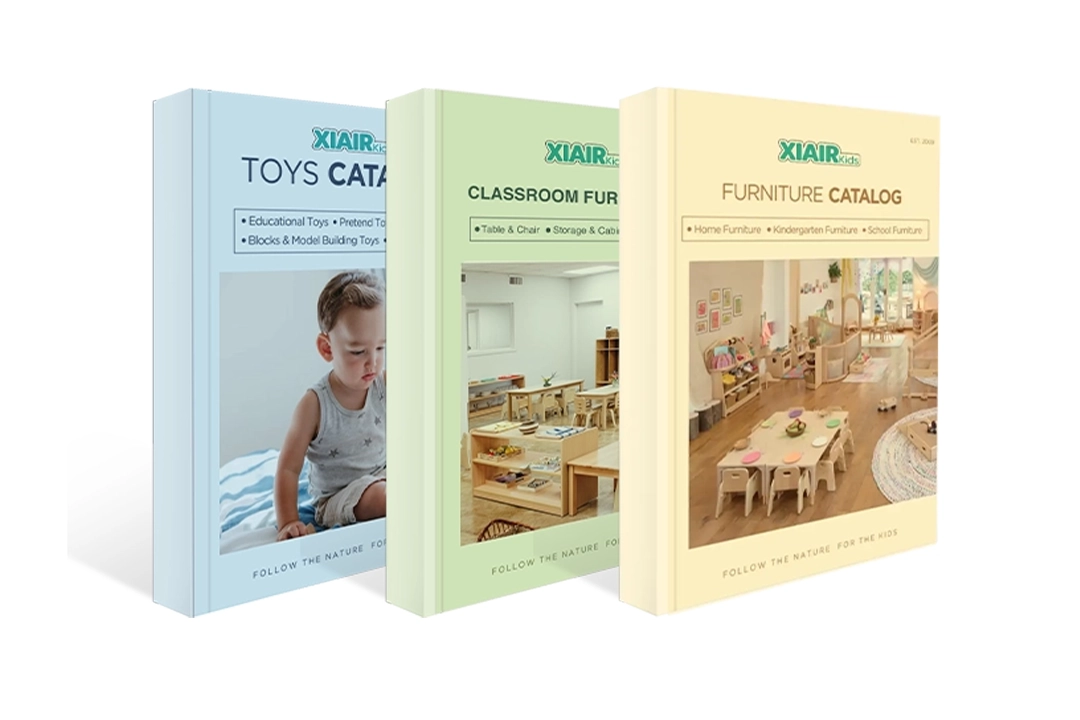Stai faticando a creare un ambiente di apprendimento che stimoli la creatività e favorisca l'esplorazione? Ti sei mai chiesto come la giusta organizzazione dell'aula possa influenzare il percorso di apprendimento dei tuoi studenti? E se un design d'aula ispirato a Reggio Emilia potesse essere la chiave per offrire ai tuoi bambini un apprendimento stimolante e pratico?
Un'aula ispirata a Reggio è più di un semplice spazio pieno di arredi e materiali. È un ambiente intenzionale, progettato per coinvolgere i bambini in esperienze di apprendimento significative. La chiave di questo approccio risiede nell'organizzazione dello spazio, nei materiali disponibili e nel modo in cui l'aula incoraggia la collaborazione e l'esplorazione.
Questa filosofia progettuale trae ispirazione dall'approccio educativo ideato da Loris Malaguzzi a Reggio Emilia, in Italia, e da allora è diventato uno dei modelli più influenti a livello mondiale. Si basa sulla convinzione che i bambini siano competenti, curiosi e capaci di costruire il proprio apprendimento attraverso l'esplorazione e l'interazione con il mondo che li circonda. Come possiamo tradurre questa convinzione in un'aula fisica che supporti tale apprendimento?
Esaminiamo i principi fondamentali e le migliori pratiche per progettare un'aula ispirata a Reggio che stimoli creatività e apprendimento.
Cos'è una classe ispirata a Reggio?
Un'aula ispirata a Reggio Emilia è progettata per riflettere i principi della filosofia di Reggio Emilia. I bambini sono visti come studenti competenti, incoraggiati a interagire profondamente con l'ambiente circostante in questo ambiente. Lo spazio è considerato un "terzo insegnante", accanto al bambino e all'educatore. Questo approccio progettuale incoraggia l'esplorazione, la ricerca e il coinvolgimento attivo. L'aula è tipicamente aperta, flessibile e inondata di luce naturale, con materiali che stimolano la curiosità e la creatività.
Le caratteristiche principali di un'aula ispirata a Reggio includono un focus su materiali naturali, risorse aperte e un ambiente che cambia in base agli interessi in continua evoluzione dei bambini. Arte, scienza ed esplorazione culturale si intrecciano nelle attività quotidiane, creando un ambiente di apprendimento ricco che supporta la crescita in ogni ambito: cognitivo, emotivo e sociale.
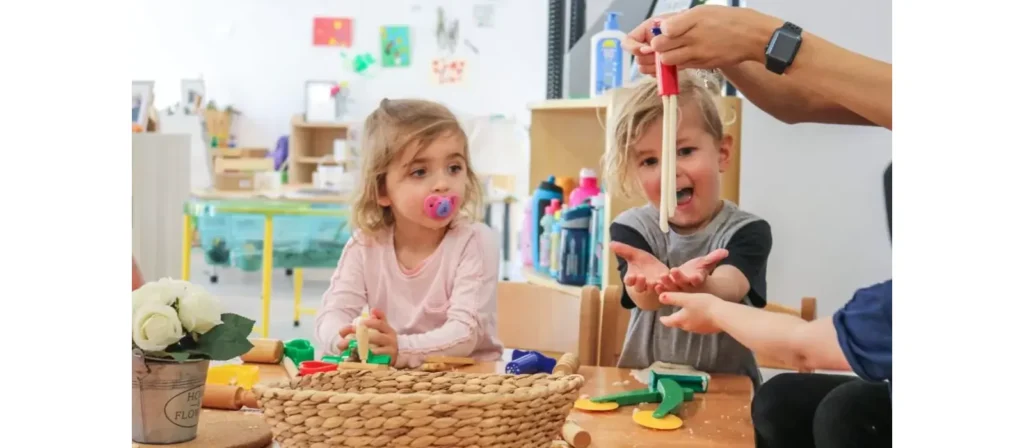
Che cos'è il Metodo Reggio Emilia?
IL Metodo didattico Reggio Emilia È un approccio incentrato sul bambino e basato su progetti che enfatizza l'esplorazione, l'espressione di sé e la collaborazione. La voce dei bambini è valorizzata mentre si impegnano in esperienze di apprendimento significative e connesse ai loro interessi. Il metodo incoraggia la risoluzione dei problemi, la creatività e il pensiero critico, il tutto in un ambiente progettato per stimolare questi processi. Gli insegnanti osservano e documentano l'apprendimento dei bambini, creando una strategia didattica personalizzata e reattiva.
Cosa ha di speciale un'aula di Reggio Emilia?
Ciò che distingue un'aula di Reggio Emilia è il suo incoraggiamento alla creatività, all'espressione di sé e all'apprendimento collaborativo. Invece dei tradizionali banchi e file di sedie, l'aula è progettata per facilitare le interazioni e promuovere il pensiero indipendente. Per esplorare i concetti, i bambini possono accedere a vari... materiali didattici, dai materiali per l'arte e l'artigianato agli oggetti naturali come pietre e foglie.
L'ambiente è organizzato in zone di apprendimento, ciascuna pensata per stimolare diverse tipologie di coinvolgimento. Alcune aree si concentrano sul silenzio e sul lavoro individuale, mentre altre supportano progetti di gruppo e apprendimento cooperativo. Gli educatori in una classe Reggio non si limitano a istruire: osservano, ascoltano e interagiscono con le idee dei bambini, consentendo loro di plasmare le proprie esperienze di apprendimento.
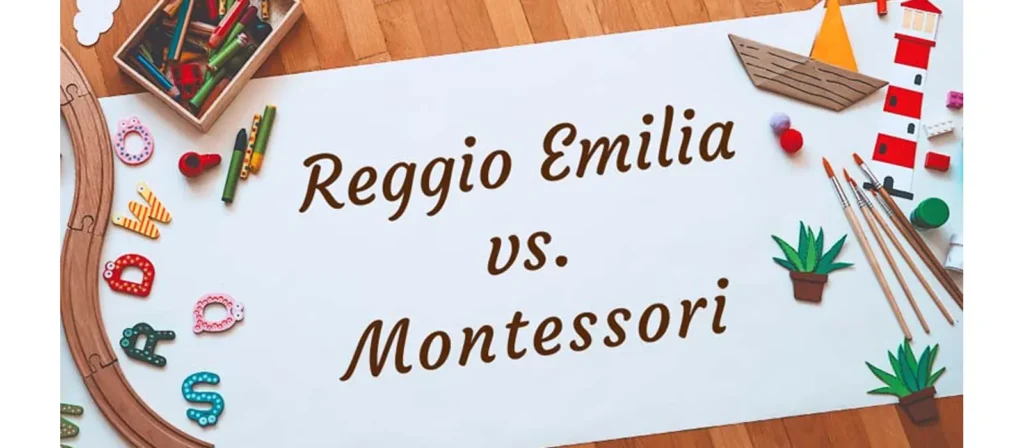
Qual è la differenza tra l'educazione Reggio e quella Montessori?
Reggio vs Montessori Education
| Caratteristica | Reggio Emilia | Montessori |
|---|---|---|
| Ruolo dell'insegnante | L'insegnante come facilitatore e osservatore | L'insegnante come guida che fornisce lezioni strutturate |
| Allestimento dell'aula | Ambienti flessibili e dinamici che cambiano in base agli interessi dei bambini | Ambiente strutturato e preparato con postazioni di lavoro specifiche |
| Focus sull'apprendimento | Ricerca, creatività e collaborazione guidate dai bambini | Lavoro indipendente, materiali pratici, apprendimento autonomo |
| Programma scolastico | Emergente, basato sugli interessi e le osservazioni dei bambini | Curriculum fisso con materiali didattici strutturati |
| Ruolo dei genitori | I genitori sono coinvolti nel processo di apprendimento | I genitori sostengono l'apprendimento del bambino a casa, meno interazione in classe |
| Materiali | Materiali aperti, spesso naturali e ricchi di sensazioni | Progettato per competenze specifiche, spesso organizzato per attività |
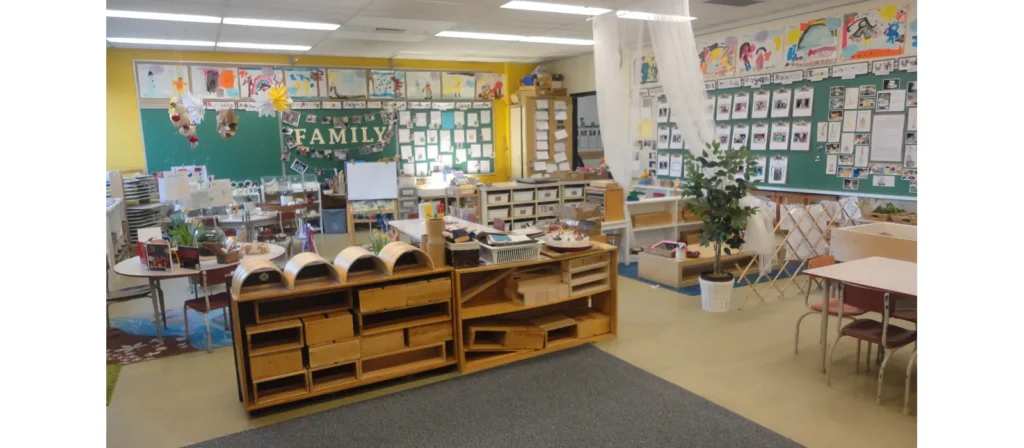
Principi chiave dell'allestimento dell'aula ispirato a Reggio
I 100 linguaggi dei bambini
IL “100 linguaggi dei bambini"concetto sottolinea che i bambini si esprimono in molti modi, tra cui l'arte, le parole, il movimento, la musica e il gioco. Un'aula ispirata a Reggio offre vari strumenti e materiali affinché i bambini possano esprimersi con qualsiasi mezzo preferiscano. Questo include colori, argilla, pennarelli, blocchi e strumenti digitali come fotocamere o tablet per documentare il loro apprendimento.
L'ambiente come terzo insegnante
A Reggio Emilia, l'aula è parte integrante del processo di apprendimento. L'ambiente è un “terzo insegnante"dopo il bambino e l'educatore. Dovrebbe essere progettato con cura per stimolare la curiosità, promuovere la collaborazione e supportare l'apprendimento. Questo include spazi flessibili, materiali naturali e risorse a cui i bambini possono accedere liberamente per ispirarli nella loro esplorazione.
Documentazione e visualizzazione
Gli insegnanti di una classe ispirata al metodo Reggio documentano regolarmente l'apprendimento dei bambini attraverso foto, video e osservazioni scritte. Questi documenti vengono esposti in tutta l'aula, consentendo a bambini e genitori di osservare il processo di apprendimento. La documentazione funge da documento e strumento di riflessione, aiutando i bambini a elaborare le proprie idee e ispirando ulteriori approfondimenti.
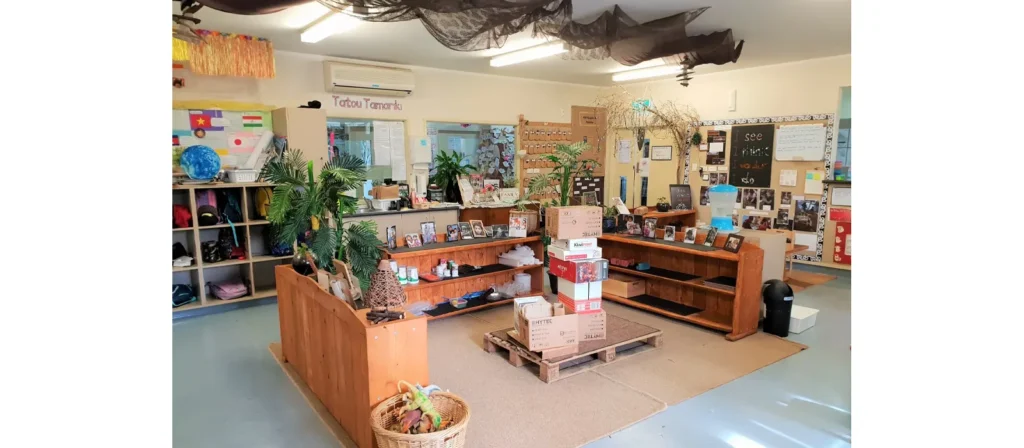
Che aspetto ha un'aula ispirata a Reggio?
Creare un'aula ispirata a Reggio Emilia significa trasformare lo spazio fisico in un ambiente dinamico dove la curiosità e la creatività dei bambini possano prosperare. È organizzata per riflettere gli interessi dei bambini e supportare la loro continua esplorazione.
Ambiente naturale e bellissimo
Un'aula ispirata a Reggio Emilia dovrebbe essere calda, accogliente e bella. Elementi naturali come legno, piante e pietre conferiscono un tocco organico allo spazio, creando un senso di calma e connessione con la natura. Un ambiente bello incoraggia i bambini ad apprezzare ciò che li circonda e promuove un senso di rispetto per lo spazio.
Spazio di apprendimento flessibile
La flessibilità è essenziale in una disposizione dell'aula ispirata a Reggio. arredi per l'aula Dovrebbe essere mobile per consentire ai bambini di adattare lo spazio alle proprie esigenze. Lo spazio dovrebbe ospitare diverse attività di apprendimento, dai progetti di gruppo all'esplorazione individuale. L'aula dovrebbe offrire diverse aree di apprendimento dove i bambini possano impegnarsi in diverse attività e collaborare con i loro coetanei.

Studio creativo
Uno studio creativo è uno spazio dedicato in classe dove i bambini possono esplorare diverse forme di espressione, come il disegno, la pittura e la scultura. Quest'area dovrebbe disporre di materiali di vario tipo che incoraggino la sperimentazione e la creatività. Lo studio creativo è progettato per ispirare i bambini a comunicare le proprie idee e pensieri attraverso diverse tecniche artistiche.
Visualizzazione del documento
La documentazione è un elemento fondamentale delle aule ispirate a Reggio Emilia. Gli insegnanti osservano e documentano attentamente i processi di apprendimento dei bambini, che vengono esposti in tutta l'aula. Il lavoro dei bambini viene celebrato e reso visibile ai bambini e alla comunità attraverso fotografie, disegni e riflessioni scritte.

Materiali aperti
I materiali didattici ispirati a Reggio dovrebbero essere aperti. Materiali come blocchi, stoffa, carta e oggetti naturali stimolano la creatività e la risoluzione dei problemi. Questi materiali non sono pre-progettati per compiti specifici, consentendo ai bambini di utilizzarli in vari modi ed esplorare diverse possibilità. I materiali aperti supportano l'idea che i bambini possano trovare soluzioni ed esprimersi in modo unico.
Area di indagine e investigazione
Un'area di indagine e ricerca in un'aula ispirata a Reggio Emilia è il luogo in cui i bambini possono esplorare i loro quesiti e interessi. Quest'area spesso ospita lenti di ingrandimento, oggetti naturalistici e libri, incoraggiando la curiosità e l'esplorazione scientifica. È progettata per promuovere l'apprendimento basato sull'indagine e favorire una comprensione più profonda del mondo che li circonda.
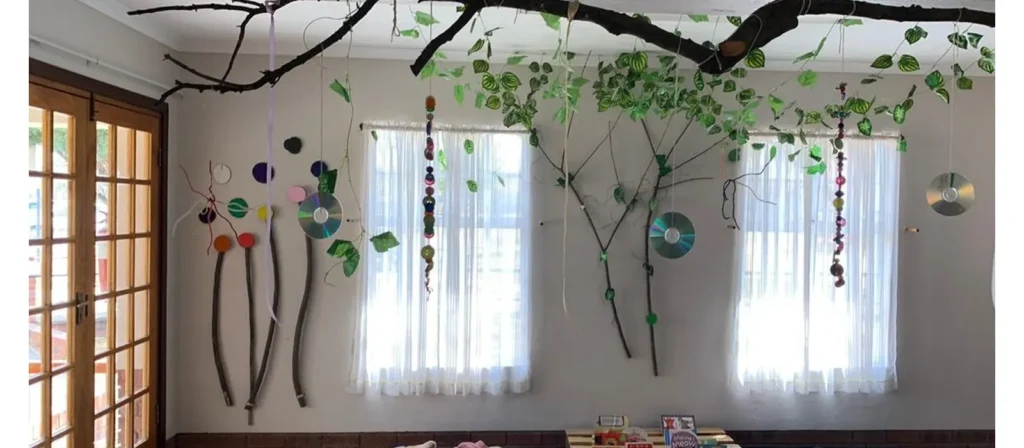
Uso della luce naturale
Un altro segno distintivo di un'aula Reggio è la massimizzazione dell'uso della luce naturale. Ampie finestre o materiali trasparenti contribuiscono a creare uno spazio luminoso e accogliente, riflettendo una luce che favorisce la chiarezza e la crescita.
Utilizzo di materiali naturali
Materiali naturali come legno, pietra e acqua vengono spesso utilizzati in classe per avvicinare i bambini alla natura e stimolare la curiosità verso il mondo che li circonda.
Toni neutri
Le aule ispirate a Reggio Emilia utilizzano spesso toni neutri come il beige, il legno chiaro e il bianco tenue per pareti e mobili. Questo contribuisce a creare un'atmosfera tranquilla, permettendo ai disegni dei bambini e ai materiali presenti nell'aula di risaltare.
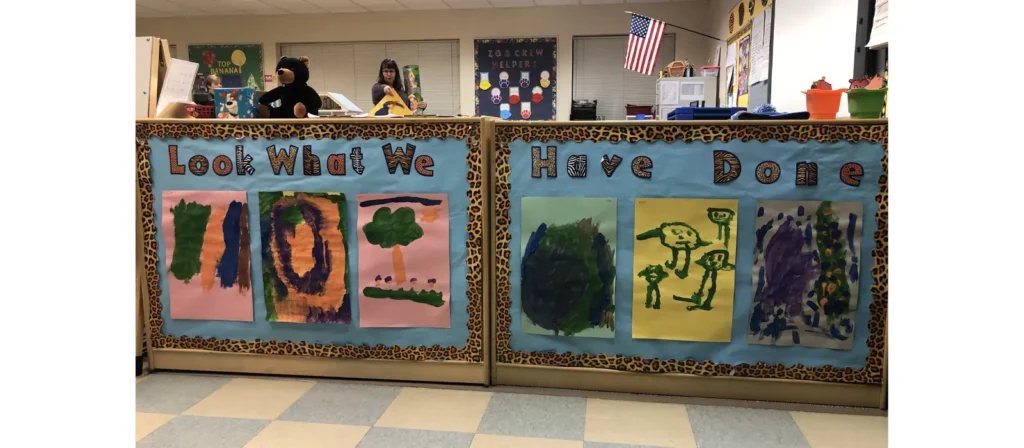
Display interattivi
Le esposizioni in un'aula prescolare ispirata a Reggio non sono statiche, ma interattive. I bambini possono essere incoraggiati a spostare i pezzi sulla parete o a interagire con le esposizioni per favorire l'apprendimento e stimolare la creatività.
Regola dei terzi
La regola dei terzi è un principio estetico che può essere applicato a un'aula didattica ispirata al metodo Reggio Emilia. Questa tecnica bilancia gli elementi visivi nell'aula, creando uno spazio più organizzato e armonioso da esplorare per i bambini.
Archiviazione aperta e organizzata
In un'aula ispirata a Reggio, gli spazi di stoccaggio sono progettati per essere aperti e accessibili. I bambini sono incoraggiati a scegliere i materiali e a riordinare dopo, promuovendo indipendenza e responsabilità.
La tua classe perfetta è a un clic di distanza!
Come allestire un'aula ispirata a Reggio?
Creare un'aula ispirata a Reggio non significa solo scegliere i materiali giusti: si tratta di promuovere un ambiente che rifletta i principi di rispetto, responsabilità e comunità. Ecco i passaggi per creare un'aula che incarni questi valori:
- Progettare un ambiente invitante: Utilizza luce naturale, toni neutri e materiali aperti per creare un'atmosfera rilassante. Crea spazi flessibili che favoriscano la creatività e la collaborazione.
- Creare aree di attività distinte: Designare spazi specifici per diverse attività, come lettura, attività artistiche e manuali o esplorazione sensoriale. Assicurarsi che i materiali siano facilmente accessibili per favorire l'indipendenza.
- Seleziona materiali aperti: Scegli materiali che incoraggino l'esplorazione pratica e che possano essere utilizzati in vari modi. Mattoncini, stoffa e argilla sono perfetti per attività creative e di problem-solving.
- Incorporare materiali naturali: I tuoi mobili e utensili dovrebbero includere legno, pietra, tessuto e altri materiali naturali. Questi materiali non sono solo belli, ma invitano anche all'esplorazione sensoriale.
- Documentare l'apprendimento dei bambini: Registrare i percorsi di apprendimento dei bambini utilizzando fotografie, riflessioni scritte e altri strumenti di documentazione. Questo aiuta a rendere visibile il processo di apprendimento e incoraggia la riflessione.
- Mostra i lavori dei bambini: Mostrate le creazioni e i processi di apprendimento dei bambini in tutta la classe. Potrebbero essere inclusi i loro lavori artistici, le foto dei loro progetti o documenti che riflettono il loro pensiero. Questo rafforza l'idea che l'apprendimento sia apprezzato e condiviso.
- Promuovere la collaborazione: Organizzare l'aula in modo che i bambini possano collaborare e lavorare insieme facilmente. Tavoli di gruppo e materiali accessibili promuovono l'apprendimento cooperativo e l'interazione sociale.
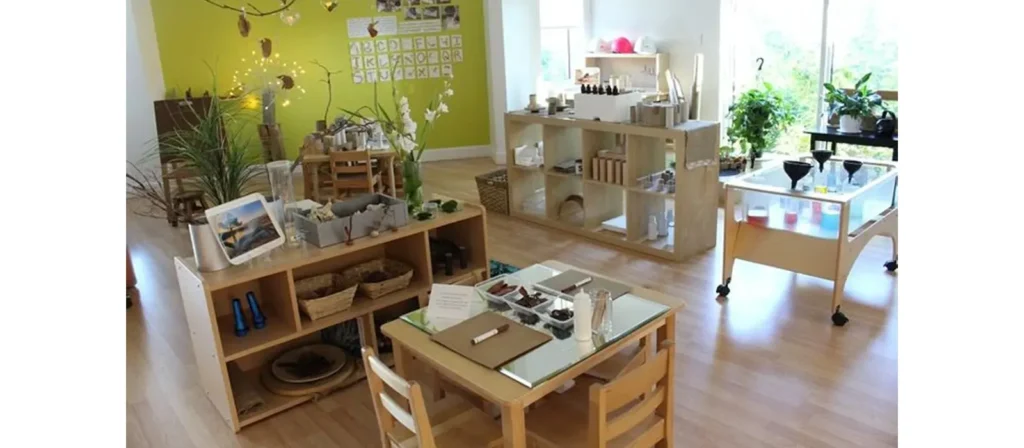
Come dividere gli spazi e disporre i mobili in un'aula ispirata a Reggio
Quando si crea un'aula ispirata al metodo Reggio per la scuola dell'infanzia, è importante suddividere lo spazio in diverse aree in base alle attività dei bambini. Ogni area deve essere organizzata con cura per supportare diverse esperienze di apprendimento, dalle discussioni di gruppo ai progetti individuali.
1. Zone di attività
Crea zone di attività distinte in classe, come un angolo lettura, uno studio creativo e un'area di esplorazione scientifica. Ogni zona dovrebbe essere progettata con uno scopo e un'intenzione, con materiali e mobili predisposti per incoraggiare attività specifiche.
Non limitarti a sognarlo, progettalo! Parleremo delle tue esigenze di arredamento personalizzato!
2. Movimento e flusso
Considerate la fluidità dell'aula e come i bambini si sposteranno tra le varie aree. Evitate spazi disordinati e assicuratevi che la disposizione consenta facili transizioni da un'attività all'altra. Questo garantisce che l'aula rimanga funzionale e favorisca la libertà di movimento e interazione.
3. Punti focali e appeal visivo
Usate punti focali per suscitare interesse in classe. Che si tratti di una bella esposizione naturalistica, di una parete artistica o di una grande finestra con vista sul giardino, questi punti focali possono dare un tocco di personalità alla stanza, attirando l'attenzione dei bambini e invitandoli a interagire con l'ambiente.
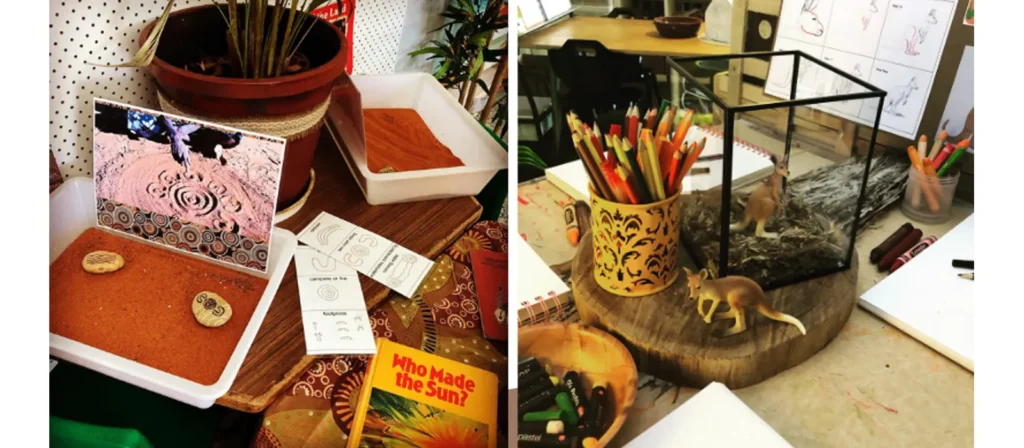
Cosa non può mancare in una classe ispirata a Reggio?
Creare un ambiente scolastico ispirato a Reggio richiede un'attenta pianificazione e una profonda comprensione di come l'ambiente influenzi l'apprendimento. Lo spazio dovrebbe essere organizzato per incoraggiare l'esplorazione, la creatività e la collaborazione. Ecco gli elementi chiave da considerare:
Materiali aperti
I materiali dovrebbero essere aperti, consentendo creatività ed esplorazione. Questo include blocchi, tessuto e materiali artistici, che può essere utilizzato in innumerevoli modi.
Leggero
La luce naturale è essenziale. Assicurati che la tua aula ispirata a Reggio Emilia abbia ampie finestre o un design aperto che permetta alla luce del sole di illuminare lo spazio, creando un ambiente accogliente e stimolante.
Aree di attività specifiche
Designate zone diverse per attività diverse, come un'area lettura tranquilla, uno spazio artistico più disordinato o un angolo dedicato all'esplorazione scientifica. Ogni zona dovrebbe essere sufficientemente flessibile da adattarsi alle esigenze dei bambini.
Non limitarti a sognarlo, progettalo! Parleremo delle tue esigenze di arredamento personalizzato!
Strumenti del documento
Documentare l'apprendimento dei bambini è un aspetto fondamentale delle classi ispirate al metodo Reggio Emilia. Fornite strumenti come fotocamere, lavagne o tablet a insegnanti e bambini per catturare momenti di esplorazione, ricerca e scoperta.
Spazio Studio
Un'area dedicata all'arte e al lavoro creativo permette ai bambini di esprimersi liberamente. Questo spazio dovrebbe essere ricco di materiali che stimolino i sensi e permettano ai bambini di sperimentare.

Materiali e strumenti didattici ispirati a Reggio
In una classe ispirata a Reggio, materiali e strumenti svolgono un ruolo cruciale nel plasmare l'esperienza di apprendimento. Queste risorse dovrebbero essere diversificate, aperte e flessibili, consentendo ai bambini di esplorare concetti diversi in modi diversi.
- Materiali artistici: Colori, argilla, tessuti, carta e materiali naturali come foglie o pietre per l'espressione artistica.
- Blocchi e materiali da costruzione: Possono essere utilizzati per costruire, creare strutture ed esplorare relazioni spaziali.
- Parti sciolte:Oggetti come bottoni, sassolini, conchiglie e altri piccoli oggetti stimolano nei bambini giochi di fantasia e la risoluzione dei problemi.
- Materiali di origine naturale: Legno, pietre e piante aiutano i bambini a entrare in contatto con l'ambiente e promuovono l'esplorazione sensoriale.
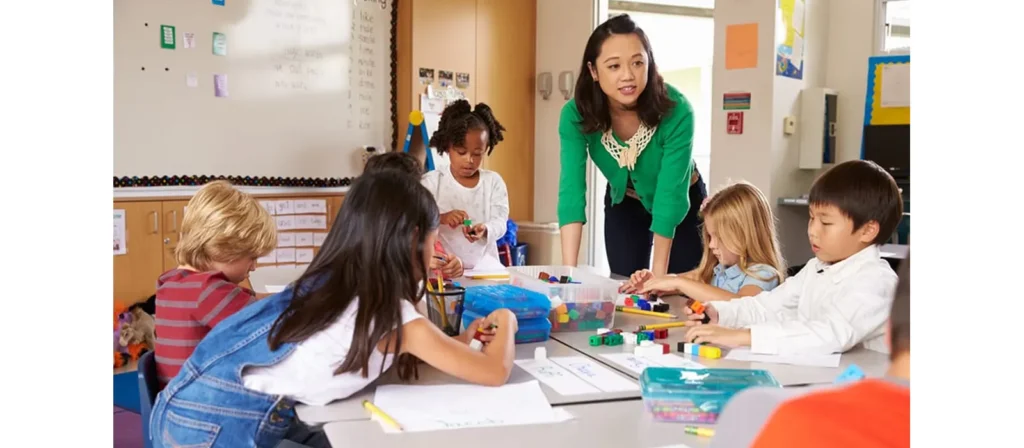
Come possono gli insegnanti introdurre i concetti di Reggio Emilia in classe?
Gli insegnanti possono integrare i principi didattici ispirati a Reggio Emilia nelle loro classi concentrandosi su collaborazione, ricerca ed espressione di sé. Ecco come possono implementare questi concetti:
- Osservazione e documentazione: Gli insegnanti dovrebbero osservare le interazioni dei bambini e documentare il loro apprendimento. Questa documentazione può aiutare a orientare l'apprendimento futuro e stimolare ulteriori ricerche.
- Promuovere l'apprendimento basato sulla ricerca: Incoraggiate i bambini a porre domande e ad approfondire argomenti di loro interesse. Offrite loro opportunità di indagare e approfondire questi argomenti in modo collaborativo.
- Crea spazi flessibili: Organizzare l'aula in modo da supportare diversi tipi di apprendimento, come il lavoro di gruppo, lo studio indipendente o l'esplorazione pratica.
- Sostieni l'autoespressione: Fornire vari materiali e strumenti che consentano ai bambini di esprimere le proprie idee in forme diverse, come l'arte, il movimento o la parola.
Domande frequenti
- Come posso creare una classe ispirata a Reggio?
Concentratevi sulla creazione di uno spazio incentrato sul bambino, con mobili flessibili, materiali naturali e aree che favoriscano l'esplorazione e la creatività. - Quali sono i principi chiave di Reggio Emilia?
I principi chiave includono il rispetto della curiosità dei bambini, la considerazione dell'ambiente come il "terzo insegnante" e la documentazione dei loro processi di apprendimento. - Quali materiali vengono utilizzati in un'aula ispirata a Reggio?
Materiali come legno, tessuto, blocchi e parti sciolte promuovono l'esplorazione sensoriale, la creatività e la risoluzione dei problemi. - Qual è il ruolo dell'insegnante in una classe ispirata a Reggio?
Gli insegnanti facilitano l'apprendimento osservando, documentando e supportando la ricerca e la creatività dei bambini in un ambiente collaborativo. - In che modo i principi di Reggio Emilia differiscono dall'istruzione tradizionale?
Reggio Emilia si concentra sull'apprendimento basato sulla ricerca e incentrato sul bambino, mentre l'istruzione tradizionale spesso enfatizza metodi diretti dall'insegnante. - Come funziona la documentazione in una classe ispirata a Reggio?
Gli insegnanti osservano e documentano il lavoro dei bambini, riflettendo sui loro processi di apprendimento ed esponendo queste registrazioni come parte dell'esperienza educativa. - È possibile utilizzare un'aula ispirata a Reggio per i bambini più grandi?
Sebbene sia più diffuso nei contesti della prima infanzia, l'approccio Reggio può essere adattato ai bambini più grandi, concentrandosi sull'apprendimento basato su progetti e sull'esplorazione collaborativa. - La classe ispirata a Reggio può essere implementata in tutti i contesti educativi?
Sebbene l'approccio sia comunemente utilizzato nell'educazione della prima infanzia, i suoi principi possono essere adattati a qualsiasi livello educativo. - Quali sono le sfide più comuni nella progettazione di un'aula ispirata a Reggio?
Le sfide possono includere vincoli di budget, limitazioni di spazio e la necessità di un continuo sviluppo professionale degli educatori per implementare pienamente la filosofia.
Conclusione
Progettare un'aula ispirata a Reggio Emilia significa creare un ambiente che favorisca la curiosità, la collaborazione e la creatività. È possibile creare un'aula che incoraggi i bambini a esplorare, pensare in modo critico ed esprimersi organizzando gli spazi in modo attento, utilizzando materiali naturali e consentendo ai bambini di guidare il proprio apprendimento. L'approccio Reggio Emilia riconosce che ogni bambino è un partecipante attivo nel proprio percorso di apprendimento e che l'aula è uno spazio vitale in cui tale apprendimento si sviluppa. Se realizzata con attenzione, questa progettazione può ispirare una vita di curiosità e apprendimento.

